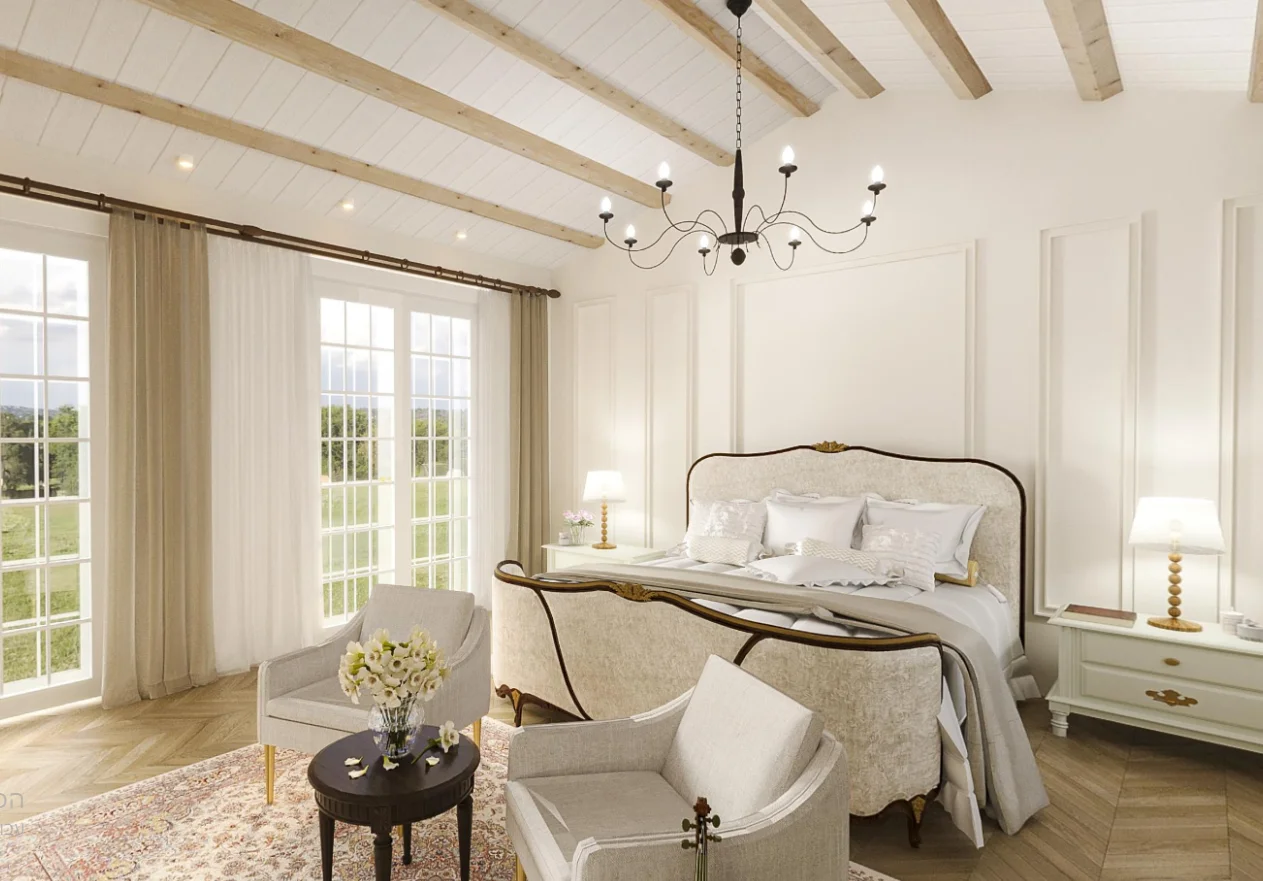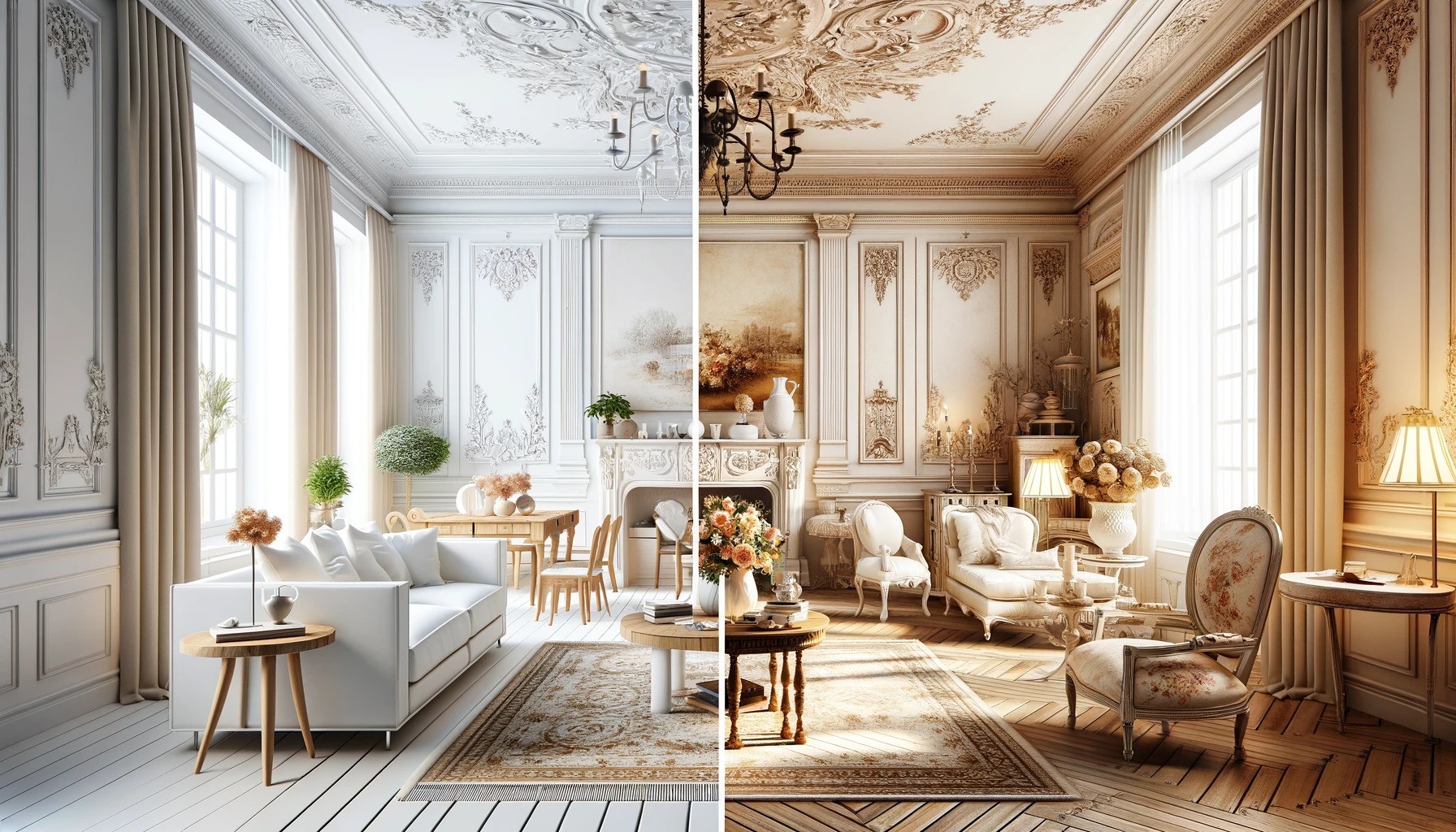The grandeur of Provence architecture combined with the delicacy of interior design creates a living space that exudes luxury.
This post delves into the intricate details of how the architecture ,
and the interior design in a luxurious Provence style come together to create a harmonious and balanced design.
We will explore the unique characteristics of Provence architecture and how it complements the interior design,
To produce a luxurious and comfortable living space.
The splendor of Provence architecture: what makes it stand out?
Provence architecture stands out for its timeless beauty and elegance, characterized by its rustic charm and intricate details. The use of natural materials such as stone, wood and clay tiles reflects a deep connection to the rich history and tradition of the region. The warm earth tones and mottled textures evoke a feeling of nostalgia and authenticity,
and create a welcoming atmosphere that is both luxurious and inviting.
The architectural elements, such as arched doorways, exposed wooden beams and cast iron accents,
Add to the sophistication and general splendor of Provence style.
Each building tells a story of the past while embracing modern comforts and services,
Which makes it a perfect combination of old world charm and contemporary luxury.

For a consultation call at no cost and without obligation call now or leave details in the box
How does interior design complement Provence architecture?
Interior design plays a crucial role in complementing Provence architecture by enhancing its inherent beauty and character. The design elements used in interior spaces echo the architectural characteristics of Provence,
and create a smooth transition from the outside to the inside.
Soft color palettes inspired by the natural environment bring a sense of peace and harmony to the living spaces,
While luxurious suedes and textures add a touch of sophistication.
Furniture items with ornate carvings and vintage finishes complement the architectural details,
and serve as a bridge between the past and the present.
Combining elements such as antique chandeliers,
Wrought iron accents and intricate tile work further enrich the interior design,
and add layers of interest. The use of natural materials such as rough hewn wood,
Terracotta and limestone connects the interior spaces to the organic beauty of the Provençal landscape.
Accessories such as pottery, ceramics and tapestries reflect the artistic heritage of the region,
and imbue the living spaces with a sense of authenticity and charm.
“Design is a balance between form and function… you need both.” – How does it fit the luxury style of Provence?
In the luxury style of Provence, the concept of balance between form and function is intricately woven into every aspect of architectural and interior design. This balance is reflected in a seamless combination of aesthetic appeal and practicality,
Creating spaces that not only look stunning but also serve a purpose.
Let’s take a deeper look at how this principle is reflected in the luxurious Provence style.
- Harmony of form and function:
The architectural elements in the luxury style of Provence are not only visually pleasing but also serve a functional purpose. From the grand arches and intricate stonework to the expansive windows that allow natural light to flood the interior, every design feature is carefully crafted to create a harmonious balance between form and function. This approach ensures that the spaces are not only beautiful but also comfortable and efficient. - Elegance meets utility:
In the luxurious Provence style, elegance and utility go hand in hand. The interior design elements are carefully selected to not only enhance the aesthetic appeal of the space but also to fulfill practical needs. Vintage furniture exudes elegance while providing comfort, and decorative accents serve both a decorative and functional purpose.
This seamless combination of luxury and utility is what sets Provence style apart and makes it a truly unique and desirable design aesthetic.
A comparison picture showing a minimalist modern design versus a luxury Provence-style room .
For a consultation call at no cost and without obligation call now or leave details in the box
Is luxury Provence the future of luxury living?
Is luxury Provence the future of luxury living? With its timeless elegance, impeccable craftsmanship,
And the emphasis on harmony and balance, the luxury Provence style undoubtedly paves the way for the future of luxury living.
The seamless combination of architecture and interior design in Provence creates spaces that radiate sophistication and refinement,
and set a new standard for luxury living.
As we adopt a more holistic approach to design, where each element is carefully curated to complement and enhance the overall aesthetic, the allure of luxury Provence style continues to grow.
The focus on creating a cohesive and harmonious living environment that is also visually stunning,
And functionally efficient resonates with modern homeowners looking for a haven that reflects their distinct taste and lifestyle.
Moreover, the enduring appeal of Provence luxury style lies in its ability to blend old-world charm with contemporary comfort, creating spaces that are not only beautiful but also livable. As the demand for luxury living experiences that prioritize comfort, style and functionality continues to rise, the luxury Provence style is emerging as a leader in shaping the future of luxury residential design.
In conclusion, luxury Provence style architecture and interior design result in an enviable living space that is both luxurious and comfortable. The harmonious combination of these two design elements shows the importance of balance and harmony in design. With the right interaction of architectural features and interior design elements, it is possible to truly create a luxurious living space that is essentially Provence.





